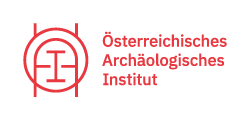Overview
This program aims to investigate, examine, analyze, and deepen the subject of the production and use of white marble in Roman Thrace. The main domains of the research will be focused on both regional and long-distance trade in white marble, which represented a significant economic-historical component in the Roman imperial period (1st-3rd centuries AD), in the region of Thrace.
The Thracian quarries have received much less attention and no previously completed investigation. Within the first part of this research, the ancient white marble quarries of modern Bulgaria will be investigated. Also, the characteristics of the quarries, the extraction, production, and distribution processes are studied. The second main part of the project focuses on the demand for marble and the needs of the cities for architectural purposes, the choices, and the quality of marble in buildings. Possible different choices on marble in comparison with the building types (such as public or private buildings) are underlined. Finally, the connection between the workshops, as well as the marble of Asia Minor, which became highly prestigious and influenced the art of masonry and sculpture in other regions, in particular in the provinces along the lower Danube River, is considered. The quality and condition were decisive criteria for the processing and usage of white marbles in the quarrying industry, which developed in Asia Minor under Roman influence and its great export power, with the greatest examples being the Prokonnesian or the Aphrodisian quarries. Preliminary data on this approach, expanding knowledge on local, regional, and long-distance trade. Our approach is focused on the systematic exploration of marble in everyday life and localized patterns of used stones. Economic models of a regional market reacting to demand or requirements, and a socially embedded commercial operation are taken into consideration. The present study is undertaken as part of the “Fingerprinting White Marbles ¬– Quarries and Cities of Roman Thrace, 1st to the 3rd century AD” (Austrian Science Fund) project.
Through investigation of the Thracian quarries and Roman architectural elements in the main urban centres in the region of Thrace, theories regarding marble trade and the cultural and technological transfer between the Roman world, Asia Minor and Thrace are examined. A large number of methods are performed in this project for the investigation of the provenance studies. This project connects the antiquity-directed disciplines of archaeology and Roman economic history with geology and the application-based analysis procedures of petrography and geochemistry.
Link: https://www.oeaw.ac.at/oeai/forschung/historische-archaeologie/objektitinerarien/provenienzstudien-weissmarmore
The project was funded by the Austrian Science Fund (FWF) as the stand-alone project p33042.
The Thracian quarries have received much less attention and no previously completed investigation. Within the first part of this research, the ancient white marble quarries of modern Bulgaria will be investigated. Also, the characteristics of the quarries, the extraction, production, and distribution processes are studied. The second main part of the project focuses on the demand for marble and the needs of the cities for architectural purposes, the choices, and the quality of marble in buildings. Possible different choices on marble in comparison with the building types (such as public or private buildings) are underlined. Finally, the connection between the workshops, as well as the marble of Asia Minor, which became highly prestigious and influenced the art of masonry and sculpture in other regions, in particular in the provinces along the lower Danube River, is considered. The quality and condition were decisive criteria for the processing and usage of white marbles in the quarrying industry, which developed in Asia Minor under Roman influence and its great export power, with the greatest examples being the Prokonnesian or the Aphrodisian quarries. Preliminary data on this approach, expanding knowledge on local, regional, and long-distance trade. Our approach is focused on the systematic exploration of marble in everyday life and localized patterns of used stones. Economic models of a regional market reacting to demand or requirements, and a socially embedded commercial operation are taken into consideration. The present study is undertaken as part of the “Fingerprinting White Marbles ¬– Quarries and Cities of Roman Thrace, 1st to the 3rd century AD” (Austrian Science Fund) project.
Through investigation of the Thracian quarries and Roman architectural elements in the main urban centres in the region of Thrace, theories regarding marble trade and the cultural and technological transfer between the Roman world, Asia Minor and Thrace are examined. A large number of methods are performed in this project for the investigation of the provenance studies. This project connects the antiquity-directed disciplines of archaeology and Roman economic history with geology and the application-based analysis procedures of petrography and geochemistry.
Link: https://www.oeaw.ac.at/oeai/forschung/historische-archaeologie/objektitinerarien/provenienzstudien-weissmarmore
The project was funded by the Austrian Science Fund (FWF) as the stand-alone project p33042.


